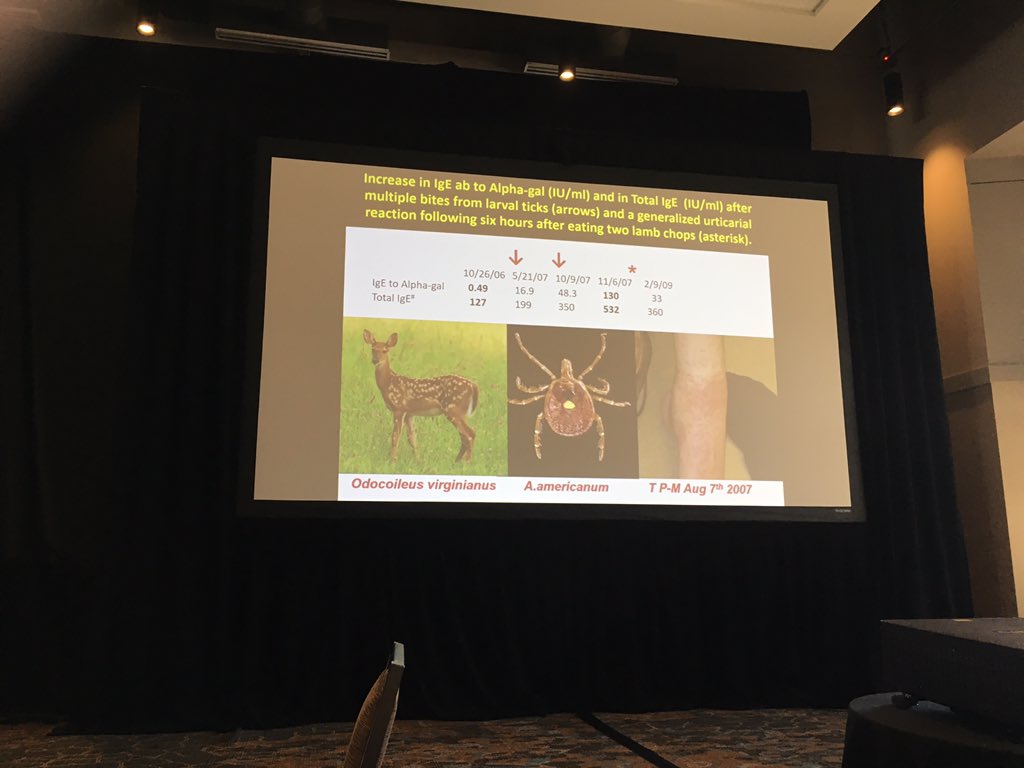Thomas Plattis -Mills, MD, PhD, FRS @MedicineUVA | talking about alpha-gal syndrome & Lone Star ticks #LivLymeSummit @liv_lyme 

@MedicineUVA @liv_lyme Plattis-Mills | presentation of #AlphaGal allergy (onset 2-6 hours after exposure) different than severe anaphylaxis. Amblyoma americanum Lone star tick responsible in US, In France & Australia Ixodes is responsible for alpha-gal. New invasive Asian tick can also transmit.
Plattis-Mills | IgE to alpha-gal is a reaction to oligosaccharides. Question: “Is it due to tick saliva or something found in the tick?” #LivLymeSummit 







Plattis-Mills | Patients with #AlphaGal allergy need to avoid read meat but also dairy products. #LivLymeSummit Plattis-Mills not only has alpha-gal but also tests positive for rickettsia but is negative for RMSF. Feels there may be a connection between the two.
Plattis-Mills | says there is a link between fire ants. It appears fire ants kill Amblyoma ticks. Big question is whether the ants will kill (or is killing) Ixodes ticks. He thinks yes, #LivLymeSummit 



Plattis-Mills | The anaphylaxis severity from alpha-gal is related to the delay. Two cells are responsible: Basophils and mast cells. CD63=Basophil activation; #LivLymeSummit
Plattis Mills | Hypothesis: Alpha-gal enters the circulation via the thoracic duct then activates mast cells. Explains the delay in reaction. Raises issue of (meat/dairy) IgE risk for atherosclerosis. #LivLymeSummit 





• • •
Missing some Tweet in this thread? You can try to
force a refresh








